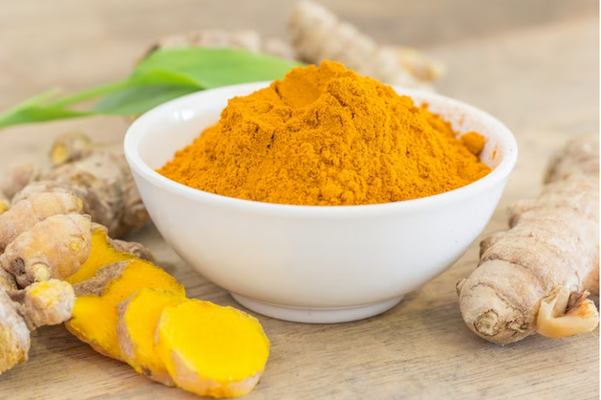
Turmeric has a Special Place in Ayurveda
Turmeric is perhaps Ayurveda’s most prominently researched and widely used spice worldwide. From delicious curries to beauty creams, turmeric is a key ingredient in them all. Apart from its use in cooking and cosmetics, it is its undeniably effective benefits to our overall wellbeing that has many health experts optimistic about the potential it holds in fighting some of the most stubborn ailments affecting humanity today.
Turmeric in Ayurveda
According to Ayurveda, turmeric can bring balance to all three doshas – vata, pitta, and kapha. Although, if consumed in excess it can disrupt the pitta and vata. Apart from this, Ayurveda credits turmeric with the rekindling of ‘agni’ or the digestive fire and benefiting the rasa (blood) and rakta (plasma) dhatus of our body.
Its bitter and pungent taste can be attributed to its ability to cleanse and mobilize energy. Turmeric offers an array of mental and physical benefits supporting the liver, joints, blood, immune system and digestive tract of the body.
Turmeric has a wide variety of applications in Ayurveda. It is said to give energy of the divine mother and bring prosperity to the ones who consume it. It is also used to cleanse the channels and chakras in Yoga, and is also used prominently in the Hatha yoga to support the ligaments.
Role of Turmeric in Modern Science
Although, turmeric has been used quiet frequently in traditional Ayurveda, it’s obviously apparent health benefits has now put it front and center of many scientific researches that aim to unlock all of mysteries this root holds.
The first and the foremost subject of research when it comes to turmeric, was whether or not one could derive all of its benefits by consuming the whole herb, or having pills with its curcumin extracted. Scientist have only recently established the fact that most of turmeric’s benefits are derived from the active ingredient curcumin.
Curcumin however has a very low level of bioavailability. This basically means that it gets metabolized or flushed out of our system before being fully absorbed through our blood stream. It was only in the late 90’s that piperine– an active ingredient in black pepper was found to be the herb that could increase the levels of curcumin in our blood streams.
Advantages of turmeric
Turmeric has had a pretty ubiquitous presence throughout Ayurveda. It has been used as both a fresh whole herb and a dried spice powder. Turmeric via our blood stream is able to circulate all of its health benefits to each and every part of our system. There is not a single part in our body that doesn’t benefit from Turmeric.
Turmeric Facilitates digestion
Turmeric, thanks to its anti-inflammatory and antioxidant properties, aids in improving the body’s digestion. Today turmeric is being studied for its role in combating gut inflammation and irritable bowel syndrome. You can find turmeric as the active ingredient in many ayurvedic digestive medicines.
Defense against free radicals with Turmeric
The rampant presence of toxins and free radicals in our body lives it vulnerable to ailments both benign and chronic like cancer and diabetes. Turmeric’s antioxidant properties helps in protecting your body from such free radicals by effectively eliminating them from your body. Studies have shown curcumin to be a particularly effective agent in being able to control enzymes that create free radicals and preventing them from creating new free radicals in the first place.
Promotes skin health with Turmeric
Due to Turmeric’s anti-inflammatory and anti-microbial properties, Turmeric can be an effective ally against many skin issues like acne, psoriasis, premature ageing and eczema. In fact, Ayurvedic practices have chronicled the use of turmeric paste for a healthy and glowing skin. Current studies into the herb have found that it is indeed a safe and effective treatment against many skin disorders.
Reduce Heart Disease Risk by adding Turmeric
Studies have found turmeric having positive effects on improving the health of the thin membrane that covers the inner lining of the heart. This thin membrane plays a crucial role in regulating blood pressure, thus by improving its quality;curcumin also inadvertently helps protect the heart against any possibility of a stroke or other chronic heart conditions in the future.
Promote Brain Health
By increasing protein found in the brain like BDNF, turmeric has shown promise in fighting against many serious brain conditions like Alzheimer’s. BDNF plays a critical role in improving brain health by keeping the neurons in top form and regulating communication between different brain cells, which is important for memory and learning. By increasing BDNF levels in the brain, Turmeric can also help individuals cope with depression.
Ways of using Turmeric
There are way too many ways to have turmeric in your daily routine, here are just a few that you can try.
Turmeric Latte
Turmeric Latte, or more commonly known as the Golden Milk, is a great detoxifying beverage with all the benefits you can expect from turmeric. You can make a glass of golden milk by adding a quarter teaspoon of turmeric to warm milk with ashwagandha, honey and added spices.
Cooking
Cooking with turmeric as one of the ingredients is one of the simplest ways to add turmeric to your daily routine. Turemeric can blend well in your favorite curry or gravy. You can also try it with smoothies and soups.
Turmeric Tea
- Water
- Ginger root
- Turmeric root or powder
You can add a small teaspoon of Turmeric powder to your ginger tea and have it whenever you like. You can add raw honey for added sweetness. We recommend you to put all the ingredients for the tea in the pot and let it simmer for 15 minutes for best results.
Apply Paste on Skin
Applying Turmeric on skin is a popular Ayurvedic tradition, still adhered to in India. You can turn the turmeric powder into a fine paste by adding water to it. The solution can later be applied to the face or skin. You can add Gram flour and essential oils to the mix according to your preference.
Turmeric, the golden spice, has a very long history of medicinal use. It’s uses date back nearly 4000 years and we recommend giving it a try in your day-to-day cooking.
Note: The information in this article is intended for your educational use only and is not a substitute for professional medical advice, diagnosis, or treatment. Always seek the advice of your physician or other qualified health providers with any questions you may have regarding a medical condition and before undertaking any diet, supplement, fitness, or other health programs.






